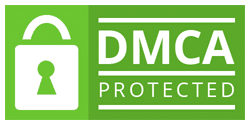Nursing safety goals
Introduction
“Speak Up For Safe Surgery” is the title of the brochure that this paper seeks to examine.
It was published in 2020 by the Department of Corporate Communications. The brochure was
designed to create awareness to assist patients and their advocates to become active in their care
especially when surgery is involved. The materials used in creating the brochure were simplified
in a way that allows the general public to easily comprehend it. Its purpose was to reach a larger
audience to accomplish the desired objectives of patient care. The contents of the brochure seeks
to educate patients on how to be informed and active members of the care team.
Summary of Article
The brochure contains four topics that show how patients can become part of the care
team to ensure that their surgery is safe and successful. Planning for the surgery is the first topic
of discussion in the brochure (The Joint Commission, 2020). A patient is required to talk to their
doctor in preparation for the surgery about their medications and inquire on the duration of
taking them prior to the surgery or whether to stop taking them. Another important thing is to
know when to stop eating or drinking or if there is a diet that needs to be followed during the
period of waiting for the surgery to take place. For female patients, it is necessary to remove nail
polish and make up to allow the doctor to effectively monitor from the nails the amount of
oxygen received and blood circulation by monitoring the skin. Items which should be brought to
the hospital should also be communicated in advance. A patient is also required to talk to their
doctor about their options regarding anesthesia or sedation as well as their pain control plan.
Another important consideration is providing the necessary documents that state the advance
3
directives and health care proxy. Lastly, it is important for a patient to identify someone who can
provide support as well as communicate on behalf of the patient when needed.
The second topic is based on the requirements before a patient goes to surgery and it
requires the patient to sign a consent form (The Joint Commission, 2020). The consent form
requires the patient to fill their name and other relevant information that will be useful to the
staff to ensure the right care is provided. The patient is then required to indicate the type of
surgery they are having and the exact location in their body to be performed on. In case any
implants will be required as a result of the surgery, then the patient is required to indicate on the
form. A section of the form requires the patient to confirm that he or she spoke to the doctor
concerning any possible risks that might occur and the different care plans that are available.
Finally, the patient needs to sign the agreement to have the surgery. Any other pressing questions
that a patient might have should be discussed during this stage prior to the surgery.
The third topic in the brochure is what next after the surgery (The Joint Commission,
2020). The patient is required to inform the doctor of any pain experienced after the surgery. In
case of any prescribed medicine, the patient should inquire about the dosage and if it contains
any side effects. The care team should be informed if the patient experiences any form of
allergies as a result of the medication given. When administered intravenous fluids, the patient
should ask the duration the fluid takes to run out and also inform the nurse when the liquid drips
too fast or too slow. Any signs of infection should be communicated immediately to the care
team such as fever and chills.
The brochure contains a fourth topic on special considerations for Covid-19 pandemic
(The Joint Commission, 2020). As a patient getting surgery during such a pandemic, it is
important to find out about the hospital’s pandemic-related safety procedures. The safety
4
procedures as indicated in the brochure include wearing a mask while entering the facility.
Cleaning and disinfecting protocols should be identified. The patient needs to identify the
personal protective equipment that will be used. He or she should also find out how the care team
will work towards protecting them from contracting the virus.
Evaluation of Brochure
The information presented in the brochure is informative and meets the criteria of
creating awareness on patient participation in safe surgery. The materials used were simplified
and broken down into easily understandable topics. However, the only challenging factor in
regards to the brochure is that some of the colors selected as a background for the texts can cause
some of the audience to strain while trying to read its contents. Using a different color for the
background could make a difference. The topic on speaking up for safe surgery interested me
because of the need to allow patients to take part in their hospital care for safety purposes.
According to Tobiano et al., (2018) patient participation during patient care improved quality of
care. In most case the nurse or doctor may fail to know what the patient is experiencing and this
may lead to medical errors especially during and after surgery such as allergic reactions. The
information provided in the brochure is therefore important and can be incorporated in my
patient education. The general public can greatly benefit from the brochure since anyone can
require surgery and also care givers.
Conclusion
Involving patients in safe surgery by creating a platform for them to speak up promotes
patient safety before and after surgery. The brochure is among the many resources that can be
used to create awareness and educate patients on ensuring that they undergo a safe and
5
successful surgery. Following the brochures’ advice can greatly improve the way facilities
operate and educate patients on how to avoid putting themselves at risk.
6
References
The Joint Commission. (2020).Speak Up For Safe Surgery [Brochure]. Department of Corporate
Communications.
Tobiano, G., Bucknall, T., Sladdin, I., Whitty, J. A., & Chaboyer, W. (2018). Patient
participation in nursing bedside handover: a systematic mixed-methods
review. International journal of nursing studies, 77, 243-258.





